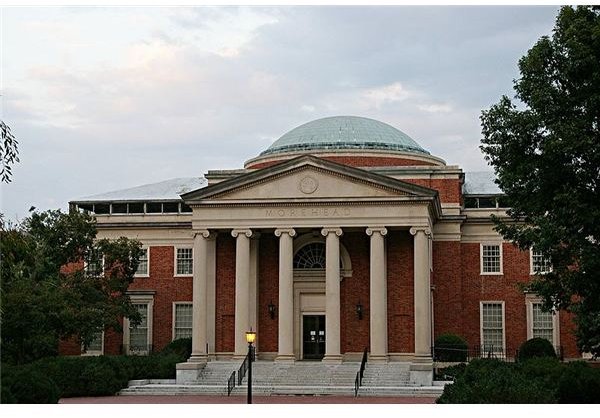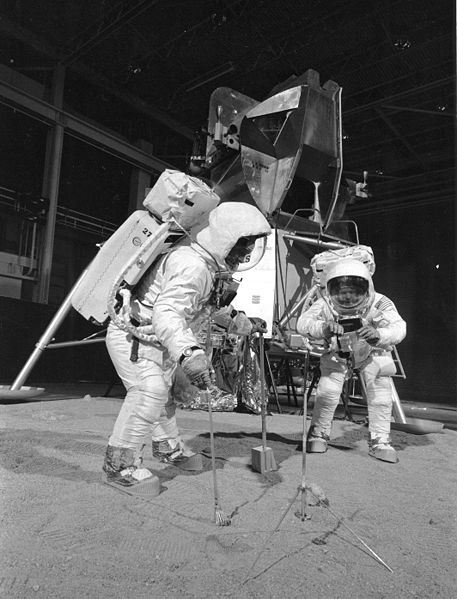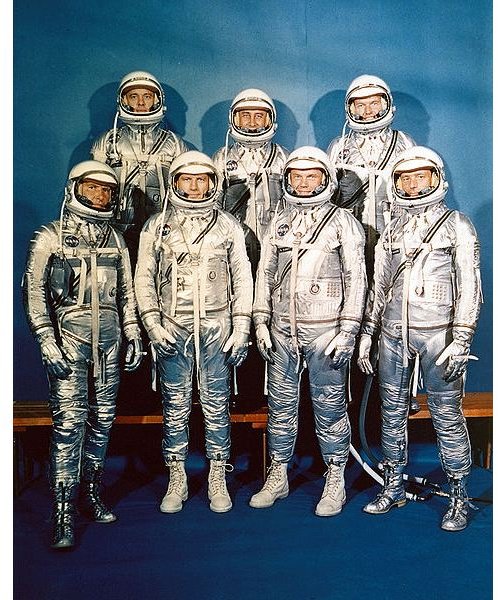Early Astronauts Training and Flight Simulators for Mercury, Gemini and Apollo
Selecting Men for Early Astronauts Training
Before early astronauts training programs could commence, NASA needed to select individuals that fit the mold of its potential space flight projects. In 1959, the United States military was asked to submit candidates to NASA who fit criteria established by the organization. This criteria was considered for a long time by the leadership, namely, no one knew exactly what qualifications were needed to become an astronaut.
NASA determined that it needed applicants that were under 40 years old, had a height of under 5 feet 11 inches, were in good physical condition, had an engineering degree or equivalent, could fly a jet with at least 1500 hours of flight time and had graduated test pilot school. Given the stringent parameters, NASA believed they would be limited in applicants. To its surprise, over 500 men qualified.
After physical and psychological tests were conducted, the organization found seven men who qualified as the first astronauts. In April 1959, the seven men were debuted to the public. Soon, these early astronauts training sessions began with the purpose of ultimately taking part in the Mercury program.
Above right: Mercury Astronauts. (Supplied by NASA; Public Domain; https://upload.wikimedia.org/wikipedia/commons/5/5a/Project_Mercury_Astronauts_-_GPN-2000-000651.jpg)
NASA’s Physical and Psychological Programs
Basic physical and psychological attributes were considered of utmost importance for the early training programs. All people chosen to take part in the space program went through daily regimens of basic cardiovascular and strength-building exercises. Endurance testing was also a part of the early training, including the simulation of G-forces, which the astronauts would experience during flight. Psychological testing included basic mental control techniques, as well as early experiments involving long-term isolation. During the early 1960s, as the mission to the Moon was taking shape, the concept of dry run simulations became necessary in order to make sure the particular teams assembled for missions to the Moon would work together with limited social stress.
Early Flight Simulator

During the early days of NASA’s space program, of particular importance to the early astronauts training regimen was flight training. The Morehead Planetarium and Science Center in North Carolina was chosen as one of the primary sites for teaching astronauts how to control a spacecraft. During the Gemini and Apollo missions, the staff of the planetarium built early flight similutors from plywood, foam rubber and barber chairs to simulate being in a capsule. They also projected a star field on the walls attempting to duplicate the psychological effects of space travel. As the astronauts learned how to control pitch and roll maneuvers and the correct manipulation of the side-to-side movements known as yaw, the stars would move.
Above left: Morehead Planetarium and Science Center. (Supplied by Balrog Daemon; Creative Commons; https://upload.wikimedia.org/wikipedia/commons/d/dc/Morehead_Planetarium_and_Science_Center.jpg)
Early Astronauts Training for the Moon Shot

Beginning in 1963, with the Apollo program in the near future, early astronauts training programs began to implement astrogeological research as part of the general pre-flight education. This was geared towards helping astronauts explore the lunar surface when the moon landing finally took place. Astronauts went through a series of lectures, learning the basics geology and volcanic activity. In addition, field trips to areas such as the Grand Canyon and Meteor Crater near Flagstaff were undertaken. Participants often donned space suits in the hot sun and conducted dry runs involving soil and rock collections. Of particular importance was the ability to select samples that would be of the most value upon returning to Earth.
Above right: Apollo Astronauts Training. (Supplied by NASA; Public Domain; https://upload.wikimedia.org/wikipedia/commons/e/ea/Apollo_11_Crew_During_Training_Exercise_-_GPN-2002-000032.jpg)
Resources
Morehead Planetarium and Science Center: https://www.moreheadplanetarium.org/index.cfm?fuseaction=page&filename=history3.html
Solar Views: https://www.solarviews.com/eng/astronts.htm
Associated Links
Astronauts That Have Walked on the Moon
